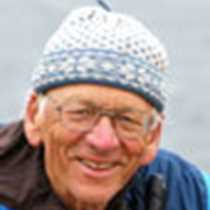Drake Passage and Half Moon Island
We continued on our southward course across the infamous Drake Passage through the night, ahead of a threatening weather front. Our passage has been about average for the Drake and it continued that way this morning, although the swell had gotten a bit more organized. National Geographic Explorer handles the beam swell quite well and we continued making excellent speed. Those coming to the forward parts of the ship spotted land and icebergs as we approached the middle of the South Shetland Islands. A few whale spouts were seen and also some of the first penguins spotted porpoised ahead of the ship. Light snow also greeted us this cold first morning in the Antarctic Peninsula as we entered through the dramatic English Strait Channel.
For the remaining part of the morning we were briefed by Expedition Leader Lisa Kelley on guidelines we must follow during our visit. We also learned about Zodiac and shore operations, both of which will become quite familiar and are essential for experiencing Antarctic to its fullest. Then lunch was announced and we all ate hurriedly as the ship came into the anchorage of one of the smaller of the South Shetland Islands.
Immediately following lunch groups prepared for the first landing of the voyage. A light dusting of snow draped the landscape of the landing at Half Moon Island. But greeting us on the beach and scattered in small sub-colonies were chinstrap and gentoo penguins. About 3500 pairs of chinstrap penguins nest on the rocky promontories of the island. At this time of year the chicks are quite large and preparing for their life at sea. Also a few gentoo penguins were scattered in small groups. People traveled along a marked route in two directions. The longer route took them to see Weddell seals lazily draped on the remaining snow fields. Antarctic fur seals were also coming ashore. Turning the opposite direction gave people a chance to see more of the sub-colonies of penguins.
The photo team was onshore giving tips and pointers to everyone trying out their first opportunities at capturing the splendid scenery surrounding the island. Everywhere you turned the vast landscape of glaciers and rugged mountain peaks towered over us and gave us our first looks at what Antarctica will be offering. Of course there were probably many hundreds of images snapped on this first landing, and many, many more will follow.




